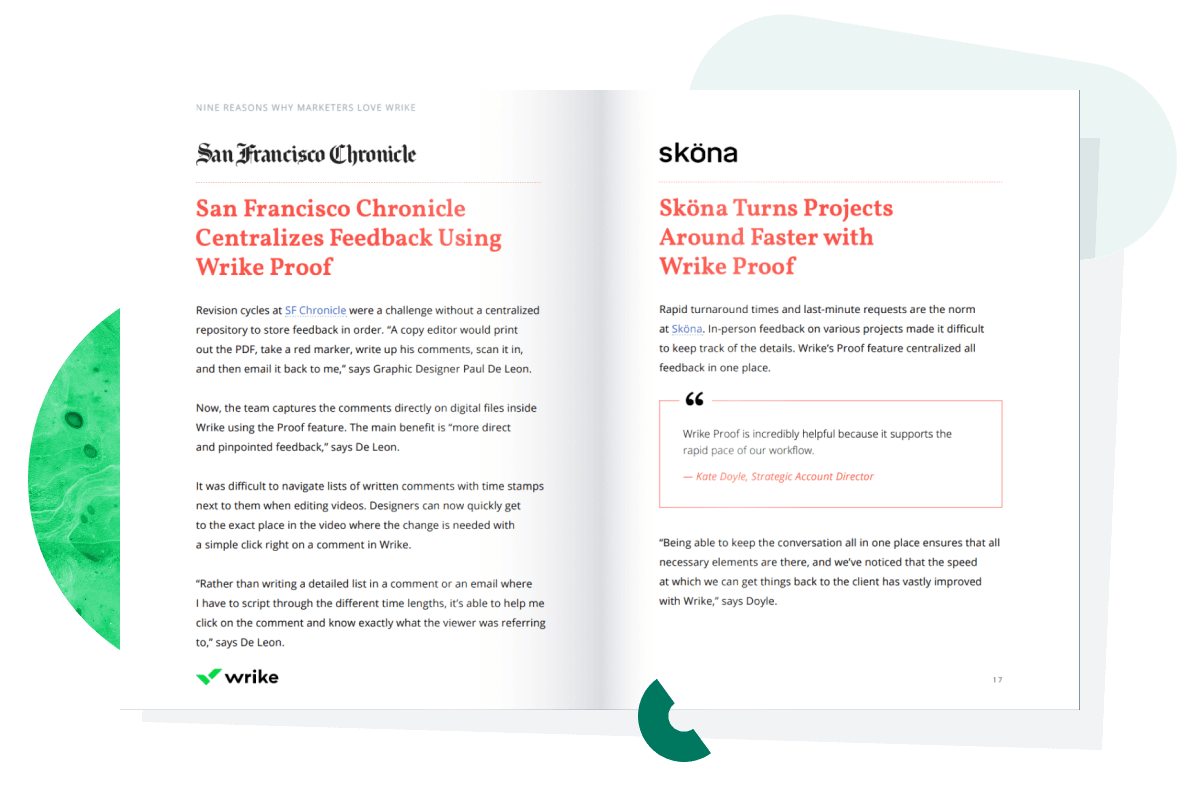Nine Reasons Why Marketers Love Wrike
How Wrike can uplevel your marketing game
Today’s marketing landscape is complex, with multiple campaign assets and various digital channels. Marketers struggle to manage these moving parts with emails, meetings, and even spreadsheets. Wrike can revolutionize the end-to-end marketing process.

Download the free eBook to see how Wrike helps marketers:
- Kick projects off on the right foot
- Have fewer emails, meetings, and phone calls
- Do more without sacrificing quality
- Fast-track the review and approval process
- And more!


Become more productive with Wrike

